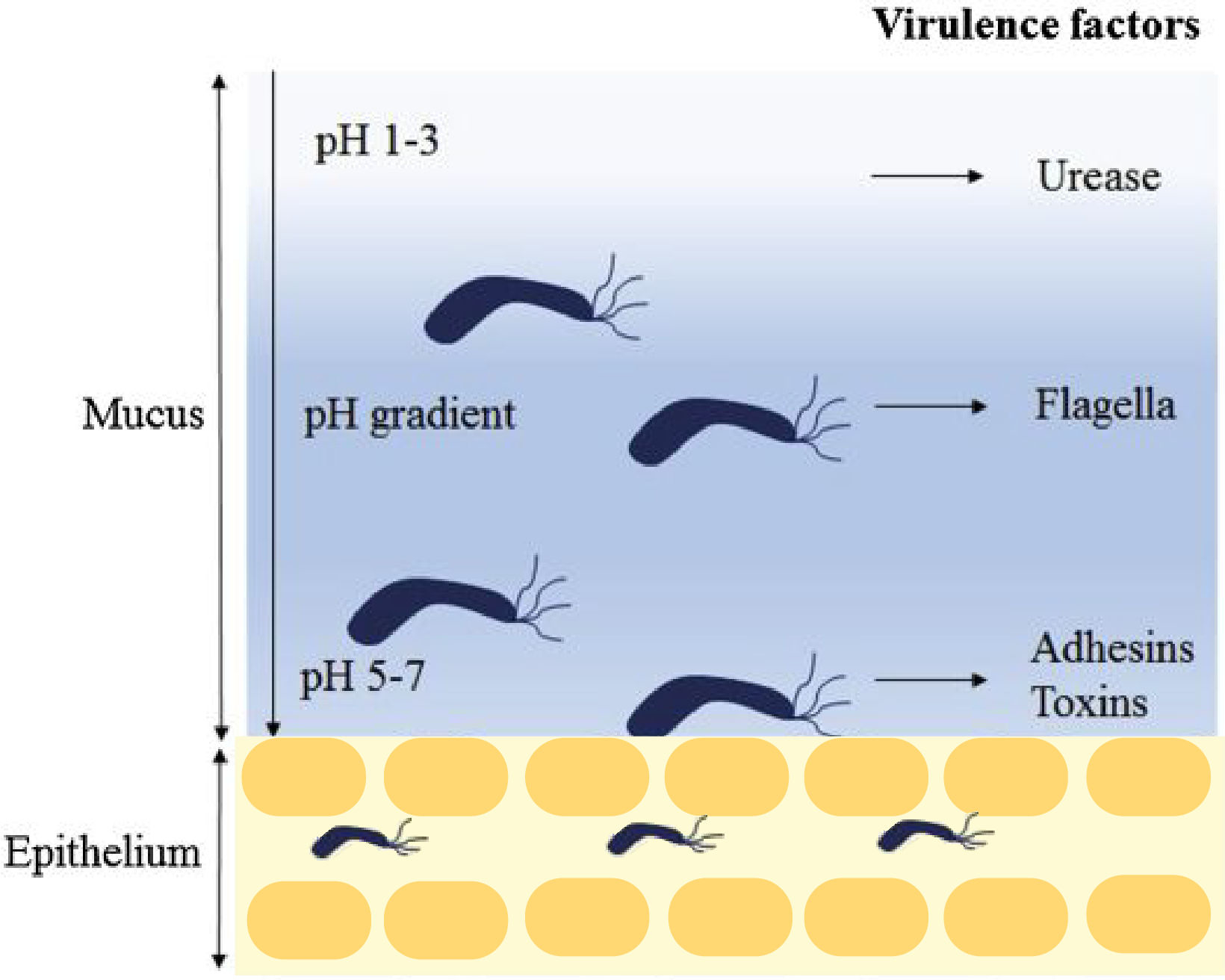Figure 2: H. pylori colonization.

H. pylori enters the stomach, and the urease activity reduces the acidity of the local environment. The H. pylori flagella-mediated motility facilitate its movement towards the lower mucosa, and it enters the epithelium with assistance from several adhesins including babA and sabA. Once the epithelium is successfully colonized, H. pylori release toxins including cagA and vacA. The figure modified from Kao et al (12).
